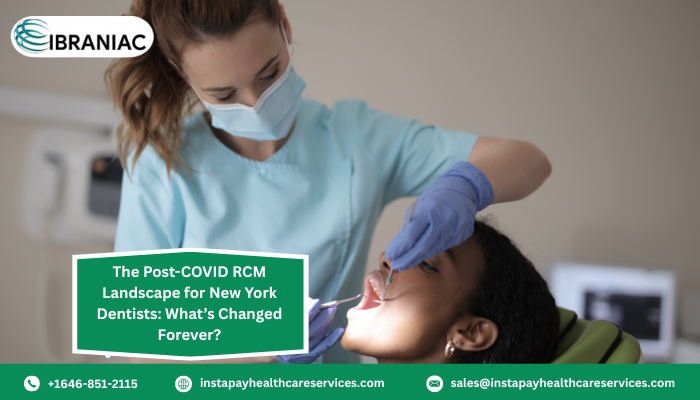
The Post-COVID RCM Landscape for New York Dentists: What’s Changed Forever?
The COVID-19 pandemic disrupted nearly every corner of the healthcare industry, and dental practices in New York were no exception. As clinics shut and reopened, and adjusted to the constantly changing safety protocols, many dental offices found themselves rethinking not just clinical workflows but also their revenue cycle management (RCM) processes. Now, in the post-COVID landscape, some of those changes have become permanent. For dental providers across New York, understanding and adapting to this new RCM environment is important to staying financially healthy.
1. Tele-dentistry Billing Has Earned Its Place
Before the pandemic, tele-dentistry was a rare offering in most dental practices. But when in-person care became risky and inaccessible, virtual consultations stepped in as a lifeline. New York State temporarily expanded Medicaid and commercial insurance coverage to include certain tele-dentistry services that allowed dentists to bill for virtual exams, consultations, and triage services.
While not all emergency provisions have remained, tele-dentistry is no longer an outlier. Many practices now offer virtual follow-ups or initial consultations as part of their routine services. Importantly, payers have developed more formal billing pathways, including CPT and D9995/D9996 codes, making reimbursement for remote services more standardized. Dental billing teams must stay informed on payer-specific policies to ensure accurate claims and avoid denials.
2. Patient Payment Behavior Has Shifted—Permanently
COVID-19 amplified financial anxiety for many patients. While in the past patients may have been more willing to pay out-of-pocket costs up front, today’s consumers are more cautious. High-deductible health plans and economic uncertainty have led to more frequent payment plan requests, delayed payments, and increased no-show rates.
To maintain cash flow, many dental practices in New York are rethinking their financial communication strategy. Transparent cost estimates, pre-treatment financial counseling, and digital payment options are now essential. Practices that have adopted patient portals or text-based billing reminders are seeing improved engagement and fewer aging receivables.
At Instapay Healthcare Services, we’ve seen firsthand how proactive billing and clear financial policies can reduce patient friction and accelerate collections. It’s no longer just about sending a statement—it’s about creating a payment experience that meets today’s expectations.
3. Insurance Processing Timelines Have Become Less Predictable
During the height of the pandemic, insurers experienced operational delays, with staff working remotely and claims processing slowing down significantly. While many carriers have since stabilized, the ripple effects are still being felt.
Some payers continue to exhibit lagging response times, inconsistent documentation requirements, or changes in policy interpretation. Dental billing teams are now tasked with being more diligent in follow-ups, tracking claim status more aggressively, and managing denials with a higher level of scrutiny.
Automation tools and specialized RCM partners can play a key role here. By outsourcing insurance follow-up or implementing smarter billing software, New York dentists can reduce administrative burden and avoid revenue leakage due to claim delays or rejections
Final Thoughts: Adapting for Long-Term Stability
COVID-19 may have accelerated these changes, but their permanence is now clear. The post-pandemic dental RCM landscape in New York requires greater flexibility, technological adoption, and patient-centric financial strategies.
Instapay Healthcare Services, a dental billing specialist in New York, is proud to help dental practices navigate this changing environment with customized billing solutions that improve cash flow, reduce denials, and enhance patient satisfaction. Instapay Healthcare Services’ dental billing solutions cover it all, from patient eligibility to follow-up from insurance companies, leaving no administrative burden for dental care providers like yourself.
Ready to optimize your dental billing in the new normal? Let’s talk.




